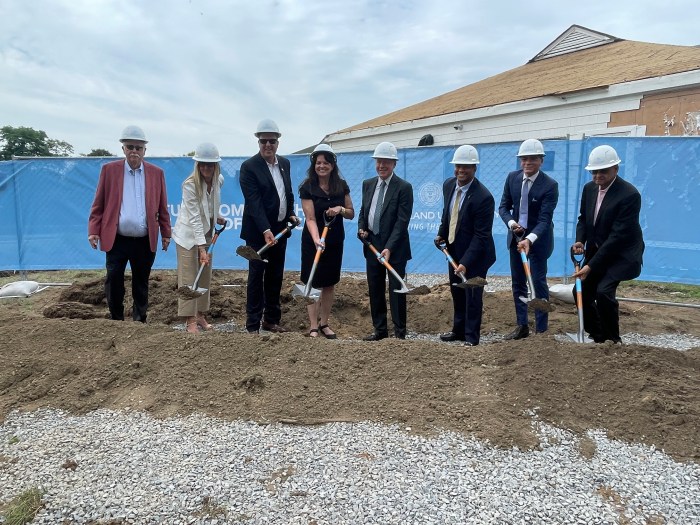Brooklyn roots lead to Garden City home

As the oldest institution of higher education in suburban Long Island, Adelphi University has quite the long and storied legacy. Originally founded on 412 Adelphi St. in Brooklyn back in 1863, the school started out as the Adelphi Academy, a private preparatory school. By 1893, Dr. Charles H. Levermore, principal of Adelphi Academy, advocated to expand the academy into becoming a four-year, coeducational liberal arts college. Levermore and Timothy Woodruff (a future three-term New York State lieutenant governor and Adelphi board of trustees president) would succeed in having the school renamed Adelphi College and chartered as a coeducational college on June 24, 1896. Classes began that September with 57 students and 16 instructors.
In 1912, the board voted to make Adelphi a college exclusively for women. With the school expanding, the decision was made in1925 for the college to sever all financial and academic ties with Adelphi Academy. With enrollment surging during the mid-’20s, President Frank D. Blodgett (second-ever president of the school) and a committee of trustees searched for a new site for the college. A 68-acre plot in Garden City was selected and on Oct. 8, 1928, the cornerstone of the first new college structure was laid. Three original buildings of the Garden City campus, Levermore Hall, Blodgett Hall and Woodruff Hall, were commissioned and designed by McKim, Mead and White.

In the ensuing decades, Adelphi continues expanding its curriculum.
Internationally renowned choreographer and dancer Ruth St. Denis became head of one of the first dance departments at an American university in 1938. It went on to become a cornerstone of the Department of Performing Arts. In 1943, Adelphi tasked Mildred Montag with establishing the first Central Collegiate School of Nursing and the U.S. Cadet Nurse Corps in New York State. Created in response to the need for nurses after the United States’ entry into World War II, the nursing school extended Adelphi leadership in professional education. The following year, First Lady Eleanor Roosevelt presided over the dedication of Harvey and Alumnae, two federally funded residence halls on campus, in a speech titled “The Challenge of Nursing for Young Women Today.”
The post-World War II era led to a series of swift changes at Adelphi. With the advent of the federal GI Bill and the chance to admit a new wave of students that included many veterans seeking to further their education, the school reverted to being a coeducational college in 1946. The readmission of men to the school fostered the creation of new baseball, basketball, football, swimming, wrestling and track teams the following year. In 1949, Adelphi’s School of Social Work was founded and in 1952, the first program for clinical psychology was established at the school. It became the forerunner to the Institute for Advanced Psychological Studies.

(Photo courtesy of the Garden City Public Library)
In 1963, Adelphi was granted university status by the Board of Regents of the State of New York. The Leon A. Swirbul Library opened, named for the Adelphi trustee and Grumman Corporation founder. The faculty grew to 209, with the campus expanding from the original three buildings to 16 on 70 acres of land. Adelphi showed significant growth in the next three years. The board of regents established the School of Business Administration (now the School of Business) as a distinct unit, conferring baccalaureate and master’s degrees in 1964; a Graduate School of Arts and Sciences was established in 1965, as was the Institute for Advanced Psychological Studies (since rededicated as the Gordon F. Derner School of Psychology), which became the world’s first university-based professional program in clinical psychology.
In the past four decades, Adelphi has continued to grow by leaps and bounds. In 1972, the Ruth S. Harley University Center was dedicated, while that same year, the Gordon F. Derner Institute of Advanced Psychological Studies became the nation’s first university-based professional school of psychology. Adelphi also established ABLE (Adult Baccalaureate Learning Experience), one of the earliest adult education baccalaureate programs.
Other major advancements included the creation of the Adelphi New York Statewide Breast Cancer Hotline and Support Program (1980); the creation of the Institute for Teaching and Education Studies (1984) before it was reorganized as the School of Education in 1990, and the establishment of the Society of Mentors (1995) and the Honors College (1995). Most recently, the Ruth S. Ammon School of Education was reorganized to become the College of Education and Health Sciences this year.


































